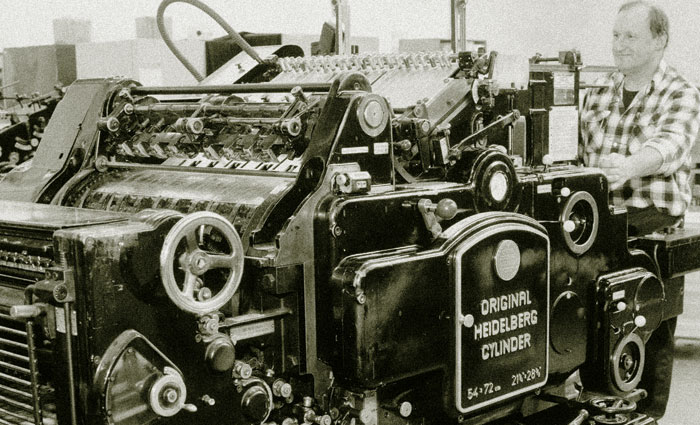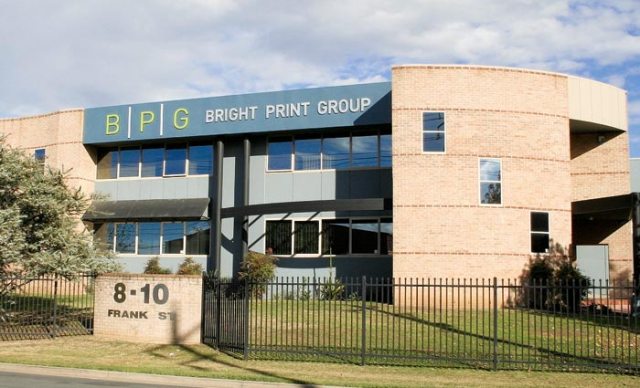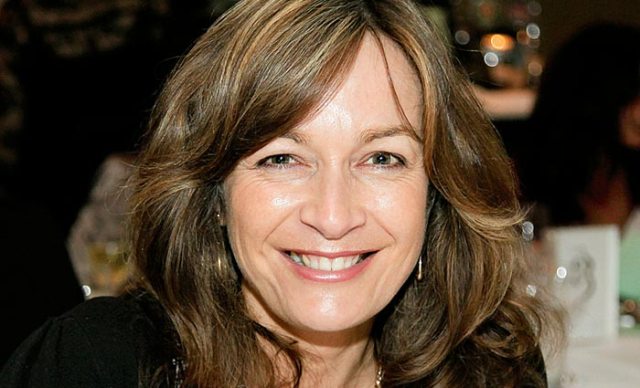

This year, Bright Print Group turns 50. Unfortunately I cannot give the exact date; it may have already happened. But I can say is this is an enormous milestone for a company in any industry, not least printing.
The past 50 years have seen significant technological and societal change. More than 500 people have called themselves Bright Print employees and more than 10,000 customers have nominated us as a supplier.
The company started with a single linotype machine in the fibro garage of William Robert Bright, grandfather to my brother, John, and I. The garage area was no bigger than 5x4m. One of the first clients was Cabra-Vale RSL Club – it is a testimony to all that they are still one of our biggest and most loyal clients.
WR Bright & Sons, as it was known back then, consisted of a single linotype and platen. It was predominantly a typesetting business, supplying type for Fairfield Printery, which was owned by my grandfather’s sister, Maisie Bright. Maisie never married and devoted her whole life to printing, following in the footsteps of her father, who was my great-grandfather, (also another Bill Bright!).
The first William John Bright, my great grandfather, started business in Fairfield in 1928. When he retired in 1958, he had become the proprietor of one of the region’s largest newspapers, The Biz. The paper was subsequently sold to Rupert Murdoch’s Cumberland Newspapers in 1958. The Fairfield Museum houses a complete collection of items from the Biz. When William John Bright retired, the then Mayor of Fairfield held a community reception with more than 100 guests, paying tribute to my great grandfather’s services to the community.
After her father’s retirement, Maisie Bright commenced Fairfield Printery. In 1970 with only four employees, my grandfather bought Fairfield Printery from his sister. The business was based in a shed behind her home at 29 Kenyon Street. My grandfather’s business was behind his home at 27 Kenyon Street. Merging the businesses was quite literally a matter of joining up the buildings in the backyard.
Apple doesn’t fall far
The first six employees were:
• William Robert Bright, compositor, my grandfather
• William Henry Bright, printer, my father
• Lillian Radford (nee Bright), compositor, another of my grandfather’s sisters and purported to be the best woman compositor in Australia
• Ted Radford, compositor, Lillian’s husband
• Julia Bright, bookkeeper/cook/delivery/cleaner etc, my grandmother
• Ken Worger, compositor/printer/later factory foreman. Ken joined in 1972 and was the first non-family member to work for the company. He remained with us until he retired in 2010
Letterpress to litho
In 1973, the company moved into lithographic printing with the purchase of its first Heidelberg KORD 62 for $11,000. At the height of its letterpress days, the factory contained 17 machines, mostly platens, as well as five linotypes.
My father recalls one of the most challenging periods in the company’s history. It was 1975 and electricity restrictions had been put into place. Electricity was rationed and it was turned off every three hours for a three-hour period. When you are running equipment that requires lead to be molten to be used for type and the type is allowed to cool down, production was almost impossible.
They improvised and used oxy-acetylene torches to keep the lead warm. They worked continuously from Friday morning to Sunday night to catch up. At the time, they had five RSL Club magazines to produce, all on letterpress. Dad recalls that many businesses were forced to close down as a result of the electricity rations. My grandmother, who lived in the house at the front of number 27, supplied the sustenance throughout the nights and days.
WR Bright & Sons started its major expansion when Cumberland Newspapers was forced to sell off commercial printing in 1975. By the end of 1975, the company had 22 employees and was now becoming a major player in Sydney.
But working conditions remained very difficult, which was typical of the era. The factory in Fairfield was built on low-lying ground so if it rained for four of five days, it would flood and 4-5 inches of water would cover the entire factory floor. Everybody wore gumboots. The oil that was in the drip trays at the bottom of the machines would end up all over the floors, making them very slippery.
Over the years, the premises expanded. In early 1991, number 31 Kenyon Street was acquired. But conditions did not improve until the move to the new factory at Wetherill Park in 1996. For the first time, we were able to move around freely without getting wet feet!
The new premises allowed us to amalgamate a number of acquired businesses including Printout, Western Separations, and Points & Picas. It was exciting to be working in a purpose-built factory that was state of the art at the time and allowed for further expansion.
Some of our biggest acquisitions occurred in 2000 with the takeover of Bloxham & Chambers Printers. In 2004, we bought Riverstone Printing. Both were iconic printing businesses in their own right. In fact, Bloxham & Chambers was established in 1912 and would also be celebrating its 100-year history this year.
There has also been considerable change to production, technology and systems. In 2007, we purchased our first 10-colour A1 press – a new Komori. In 2008, we introduced systems to ensure compliance to the ISO 14001 environmental standard. This led to the winning of a number of environmental awards, including Gold Medal for Environmental Systems twice at the NSW Print Awards and being the first NSW printer to be certified to Level 3 of the PIAA’s Sustainable Green Print.
The ISO 14001 certification complimented our ISO 9001 quality certification, which has been in place since 1996. In 2010, our entire workforce undertook training, and was subsequently awarded qualifications to Certificate III or IV in Competitive Manufacturing.
We haven’t slowed down in recent times. In 2011, we expanded outside Sydney by acquiring NCP Printing in Newcastle. NCP also has its own colourful history, having acquired some of Sydney’s most enduring printing companies over the past 15 years. Among the NCP stable were Rossprint, founded in 1862, and JB Waldegrave Printing founded in 1893.
Survival of the fittest
To survive 50 years in any industry is an enormous feat. Think of all the companies that have come and gone just in the past 10 years, least of all 50. Iconic printers such as Potstill Press, Superfine, Chippendales and McMillans to name a few.
Our commitment to Bright Print remains just as strong as that of our grandfather and father, if not stronger. We will continue to weather the storm that our economy is raging within. We will continue to seek out better production methods, more efficient and new types of equipment and improved systems.
We have to continue to look forward, plan appropriately and remain vigilant to the opportunities and challenges that are around the corner. This means not only staying true to our printing heritage but also embracing the new digital opportunities and markets that are emerging.
Debbie Burgess (nee Bright) is director of Bright Print Group
Factfile 1962
• Prime Minister was Sir Robert Menzies
• Australian Ballet was founded
• Gary Player wins the Australian Open
• St George beat Wests 9-6 in NSW Rugby League grand final
• Essendon beat Carlton 90-58 in the Victorian Football League grand final
• Population was 10,700,000
• Cuban Missile Crisis unfolds in the US with President Kennedy
• ‘Love me do’ is The Beatles’ first recording
• Nelson Mandela was arrested and jailed
• Marilyn Monroe committed suicide
• Life expectancy was 70.1 years
Have you got a company history that you want to submit to ProPrint? Email ProPrint editor Steven Kiernan at skiernan@proprint.com.au or call (02) 8399 7694
Comment below to have your say on this story.
If you have a news story or tip-off, get in touch at editorial@sprinter.com.au.
Sign up to the Sprinter newsletter


